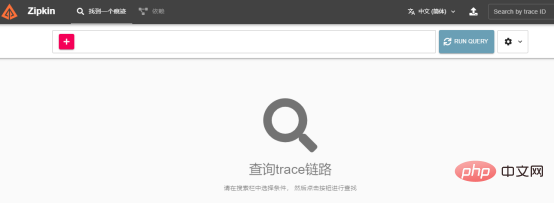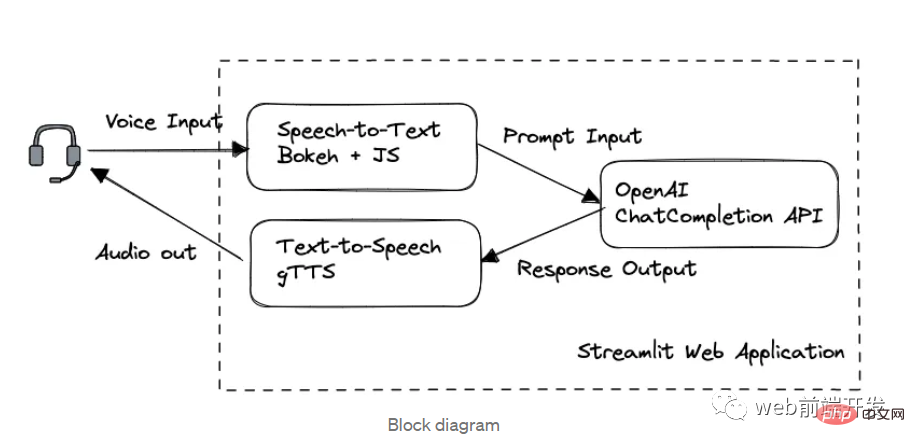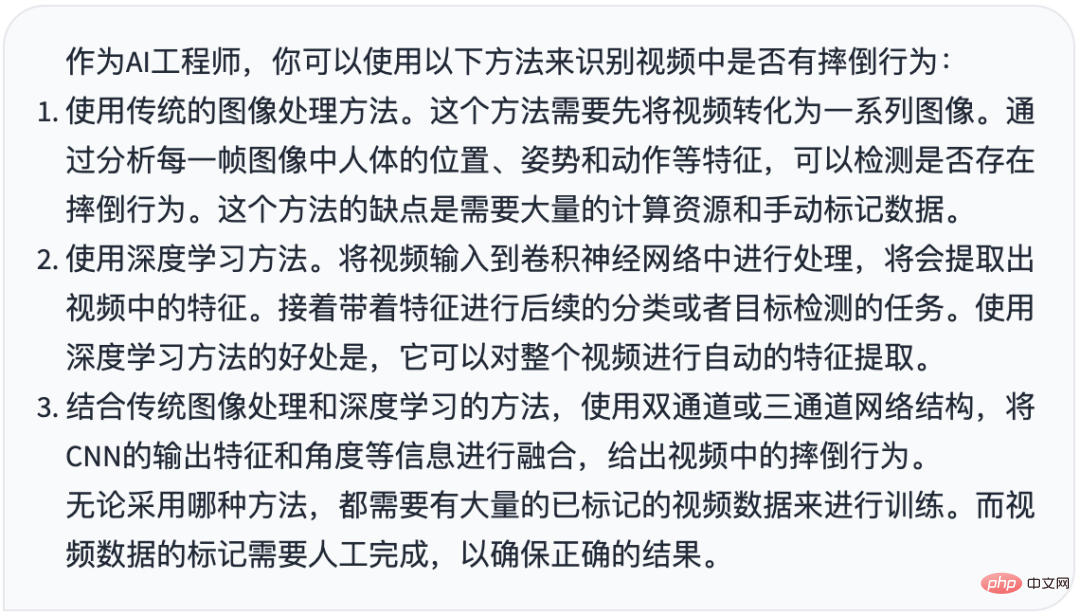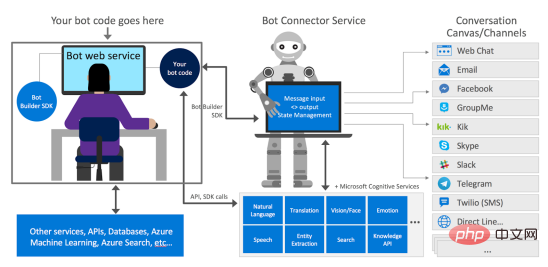
在網路時代,影片成為了人們獲取信息,學習知識,娛樂消遣的重要方式。因此,建立一個線上影片平台已經成為了許多開發者的需求。本文將介紹如何使用Laravel框架來開發一個線上影片平台,並提供具體的程式碼範例。
- 確定需求
在開始開發之前,我們需要先明確自己的需求。一個基本的線上影片平台需要具備以下功能:
- 影片上傳
- 影片播放
- 影片分類
- 影片搜尋
- #視訊評論
- 用戶註冊與登入
- 用戶管理
- #環境配置
在開始使用Laravel框架在進行開發之前,我們需要先配置好環境。可以採用XAMPP或WAMPP等整合環境進行配置,同時 安裝Composer,它是PHP的依賴管理器,可以方便地管理Laravel框架所需的依賴函式庫。
- 建立專案
在環境配置完成後,我們可以開始建立Laravel專案。開啟終端,輸入以下指令:
composer create-project --prefer-dist laravel/laravel videoplatform
這個指令將會在目前目錄下建立一個名為「videoplatform」的Laravel專案。
- 資料庫設計與遷移
接下來,我們需要設計資料庫,並執行遷移。在本次專案中,我們需要設計的表格如下:
- users(儲存使用者資訊)
- videos(儲存視訊資訊)
- categories(儲存影片分類資訊)
- comments(儲存影片評論資訊)
在專案根目錄下執行以下指令,建立migration:
php artisan make:migration create_users_table php artisan make:migration create_videos_table php artisan make:migration create_categories_table php artisan make:migration create_comments_table
編輯每個migration文件,進行資料庫設計。
完成資料庫設計後,回到終端,執行以下指令進行遷移:
php artisan migrate
- #路由設計
在Laravel中,路由控制著URL應該如何回應。編輯routes/web.php文件,設計路由:
Route::get('/', 'HomeController@index')->name('home');
Route::get('/videos', 'VideoController@index')->name('videos.index');
Route::get('/videos/create', 'VideoController@create')->name('videos.create');
Route::post('/videos/store', 'VideoController@store')->name('videos.store');
Route::get('/videos/{id}', 'VideoController@show')->name('videos.show');
Route::get('/videos/{id}/edit', 'VideoController@edit')->name('videos.edit');
Route::put('/videos/{id}', 'VideoController@update')->name('videos.update');
Route::delete('/videos/{id}', 'VideoController@destroy')->name('videos.destroy');
Route::post('/comments', 'CommentController@store')->name('comments.store');- 視圖設計
#視圖是使用者與應用程式互動的重要介面,需要設計良好,美觀大方。在resources/views目錄下建立以下視圖檔案:
- home.blade.php(首頁)
- videos/index.blade.php(影片清單頁)
- videos/create.blade.php(影片上傳頁)
- videos/show.blade.php(影片播放頁)
- videos/edit.blade.php(影片編輯頁)
- 模型設計
在Laravel中,模型是與資料庫表對應的類別。它們負責與資料庫進行交互,並為控制器提供資料。在app目錄下建立以下模型檔案:
- User.php
- Video.php
- Category.php ##Comment.php
- 控制器設計
- HomeController.php
- VideoController.php
- ##CommentController.php
- 以上是線上影片平台開發的大致流程,下面展示一些核心的程式碼片段。
在Video模型中新增關聯關係,並定義一個名為「thumbnail」的存取器,用於取得影片的縮圖。
class Video extends Model
{
// 添加分类关联关系
public function category()
{
return $this->belongsTo(Category::class);
}
// 添加评论关联关系
public function comments()
{
return $this->hasMany(Comment::class);
}
// 定义缩略图访问器
public function getThumbnailAttribute()
{
return Storage::url($this->attributes['thumbnail']);
}
}在VideoController中實作影片上傳功能:
class VideoController extends Controller
{
// 显示视频上传页面
public function create()
{
$categories = Category::all();
return view('videos.create', compact('categories'));
}
// 处理视频上传请求
public function store(Request $request)
{
$request->validate([
'title' => 'required|max:255',
'description' => 'nullable|max:1000',
'category_id' => 'required|numeric',
'video_file' => 'required|mimetypes:video/mp4|max:102400',
'thumbnail_file' => 'required|mimetypes:image/jpeg,image/png|max:1024',
]);
$video = new Video();
$video->title = $request->get('title');
$video->description = $request->get('description');
$video->category_id = $request->get('category_id');
$video->user_id = Auth::id();
$video_file = $request->file('video_file');
$video_file_name = uniqid().'.'.$video_file->getClientOriginalExtension();
Storage::putFileAs('public/videos', $video_file, $video_file_name);
$video->video_file = 'storage/videos/'.$video_file_name;
$thumbnail_file = $request->file('thumbnail_file');
$thumbnail_file_name = uniqid().'.'.$thumbnail_file->getClientOriginalExtension();
Storage::putFileAs('public/videos/thumbnails', $thumbnail_file, $thumbnail_file_name);
$video->thumbnail = 'storage/videos/thumbnails/'.$thumbnail_file_name;
$video->save();
return redirect()->route('videos.index');
}
}在CommentController中實作評論發布功能:
class CommentController extends Controller
{
public function store(Request $request)
{
$request->validate([
'video_id' => 'required|numeric',
'content' => 'required|max:1000',
]);
$comment = new Comment();
$comment->video_id = $request->get('video_id');
$comment->user_id = Auth::id();
$comment->content = $request->get('content');
$comment->save();
return redirect()->back();
}
}到此為止,您已經學會了使用Laravel框架來開發一個線上影片平台。當然,還有很多其他的功能需要您自行開發完善。希望本文能對您有所幫助。
以上是如何使用Laravel開發線上影片平台的詳細內容。更多資訊請關注PHP中文網其他相關文章!
 Nuitka简介:编译和分发Python的更好方法Apr 13, 2023 pm 12:55 PM
Nuitka简介:编译和分发Python的更好方法Apr 13, 2023 pm 12:55 PM译者 | 李睿审校 | 孙淑娟随着Python越来越受欢迎,其局限性也越来越明显。一方面,编写Python应用程序并将其分发给没有安装Python的人员可能非常困难。解决这一问题的最常见方法是将程序与其所有支持库和文件以及Python运行时打包在一起。有一些工具可以做到这一点,例如PyInstaller,但它们需要大量的缓存才能正常工作。更重要的是,通常可以从生成的包中提取Python程序的源代码。在某些情况下,这会破坏交易。第三方项目Nuitka提供了一个激进的解决方案。它将Python程序编
 我创建了一个由 ChatGPT API 提供支持的语音聊天机器人,方法请收下Apr 07, 2023 pm 11:01 PM
我创建了一个由 ChatGPT API 提供支持的语音聊天机器人,方法请收下Apr 07, 2023 pm 11:01 PM今天这篇文章的重点是使用 ChatGPT API 创建私人语音 Chatbot Web 应用程序。目的是探索和发现人工智能的更多潜在用例和商业机会。我将逐步指导您完成开发过程,以确保您理解并可以复制自己的过程。为什么需要不是每个人都欢迎基于打字的服务,想象一下仍在学习写作技巧的孩子或无法在屏幕上正确看到单词的老年人。基于语音的 AI Chatbot 是解决这个问题的方法,就像它如何帮助我的孩子要求他的语音 Chatbot 给他读睡前故事一样。鉴于现有可用的助手选项,例如,苹果的 Siri 和亚马
 ChatGPT 的五大功能可以帮助你提高代码质量Apr 14, 2023 pm 02:58 PM
ChatGPT 的五大功能可以帮助你提高代码质量Apr 14, 2023 pm 02:58 PMChatGPT 目前彻底改变了开发代码的方式,然而,大多数软件开发人员和数据专家仍然没有使用 ChatGPT 来改进和简化他们的工作。这就是为什么我在这里概述 5 个不同的功能,以提高我们的日常工作速度和质量。我们可以在日常工作中使用它们。现在,我们一起来了解一下吧。注意:切勿在 ChatGPT 中使用关键代码或信息。01.生成项目代码的框架从头开始构建新项目时,ChatGPT 是我的秘密武器。只需几个提示,它就可以生成我需要的代码框架,包括我选择的技术、框架和版本。它不仅为我节省了至少一个小时
 解决Batch Norm层等短板的开放环境解决方案Apr 26, 2023 am 10:01 AM
解决Batch Norm层等短板的开放环境解决方案Apr 26, 2023 am 10:01 AM测试时自适应(Test-TimeAdaptation,TTA)方法在测试阶段指导模型进行快速无监督/自监督学习,是当前用于提升深度模型分布外泛化能力的一种强有效工具。然而在动态开放场景中,稳定性不足仍是现有TTA方法的一大短板,严重阻碍了其实际部署。为此,来自华南理工大学、腾讯AILab及新加坡国立大学的研究团队,从统一的角度对现有TTA方法在动态场景下不稳定原因进行分析,指出依赖于Batch的归一化层是导致不稳定的关键原因之一,另外测试数据流中某些具有噪声/大规模梯度的样本
 摔倒检测-完全用ChatGPT开发,分享如何正确地向ChatGPT提问Apr 07, 2023 pm 03:06 PM
摔倒检测-完全用ChatGPT开发,分享如何正确地向ChatGPT提问Apr 07, 2023 pm 03:06 PM哈喽,大家好。之前给大家分享过摔倒识别、打架识别,今天以摔倒识别为例,我们看看能不能完全交给ChatGPT来做。让ChatGPT来做这件事,最核心的是如何向ChatGPT提问,把问题一股脑的直接丢给ChatGPT,如:用 Python 写个摔倒检测代码 是不可取的, 而是要像挤牙膏一样,一点一点引导ChatGPT得到准确的答案,从而才能真正让ChatGPT提高我们解决问题的效率。今天分享的摔倒识别案例,与ChatGPT对话的思路清晰,代码可用度高,按照GPT返回的结果完全可以开
 17 个可以实现高效工作与在线赚钱的 AI 工具网站Apr 11, 2023 pm 04:13 PM
17 个可以实现高效工作与在线赚钱的 AI 工具网站Apr 11, 2023 pm 04:13 PM自 2020 年以来,内容开发领域已经感受到人工智能工具的存在。1.Jasper AI网址:https://www.jasper.ai在可用的 AI 文案写作工具中,Jasper 作为那些寻求通过内容生成赚钱的人来讲,它是经济实惠且高效的选择之一。该工具精通短格式和长格式内容均能完成。Jasper 拥有一系列功能,包括无需切换到模板即可快速生成内容的命令、用于创建文章的高效长格式编辑器,以及包含有助于创建各种类型内容的向导的内容工作流,例如,博客文章、销售文案和重写。Jasper Chat 是该
 为什么特斯拉的人形机器人长得并不像人?一文了解恐怖谷效应对机器人公司的影响Apr 14, 2023 pm 11:13 PM
为什么特斯拉的人形机器人长得并不像人?一文了解恐怖谷效应对机器人公司的影响Apr 14, 2023 pm 11:13 PM1970年,机器人专家森政弘(MasahiroMori)首次描述了「恐怖谷」的影响,这一概念对机器人领域产生了巨大影响。「恐怖谷」效应描述了当人类看到类似人类的物体,特别是机器人时所表现出的积极和消极反应。恐怖谷效应理论认为,机器人的外观和动作越像人,我们对它的同理心就越强。然而,在某些时候,机器人或虚拟人物变得过于逼真,但又不那么像人时,我们大脑的视觉处理系统就会被混淆。最终,我们会深深地陷入一种对机器人非常消极的情绪状态里。森政弘的假设指出:由于机器人与人类在外表、动作上相似,所以人类亦会对
 如何使用Azure Bot Services创建聊天机器人的分步说明Apr 11, 2023 pm 06:34 PM
如何使用Azure Bot Services创建聊天机器人的分步说明Apr 11, 2023 pm 06:34 PM译者 | 李睿审校 | 孙淑娟信使、网络服务和其他软件都离不开机器人(bot)。而在软件开发和应用中,机器人是一种应用程序,旨在自动执行(或根据预设脚本执行)响应用户请求创建的操作。在本文中, NIX United公司的.NET开发人员Daniil Mikhov介绍了使用微软Azure Bot Services创建聊天机器人的一个例子。本文将对想要使用该服务开发聊天机器人的开发人员有所帮助。 为什么使用Azure Bot Services? 在Azure Bot Services上开发聊


熱AI工具

Undresser.AI Undress
人工智慧驅動的應用程序,用於創建逼真的裸體照片

AI Clothes Remover
用於從照片中去除衣服的線上人工智慧工具。

Undress AI Tool
免費脫衣圖片

Clothoff.io
AI脫衣器

AI Hentai Generator
免費產生 AI 無盡。

熱門文章

熱工具

VSCode Windows 64位元 下載
微軟推出的免費、功能強大的一款IDE編輯器

SublimeText3 Linux新版
SublimeText3 Linux最新版

記事本++7.3.1
好用且免費的程式碼編輯器

EditPlus 中文破解版
體積小,語法高亮,不支援程式碼提示功能

禪工作室 13.0.1
強大的PHP整合開發環境





